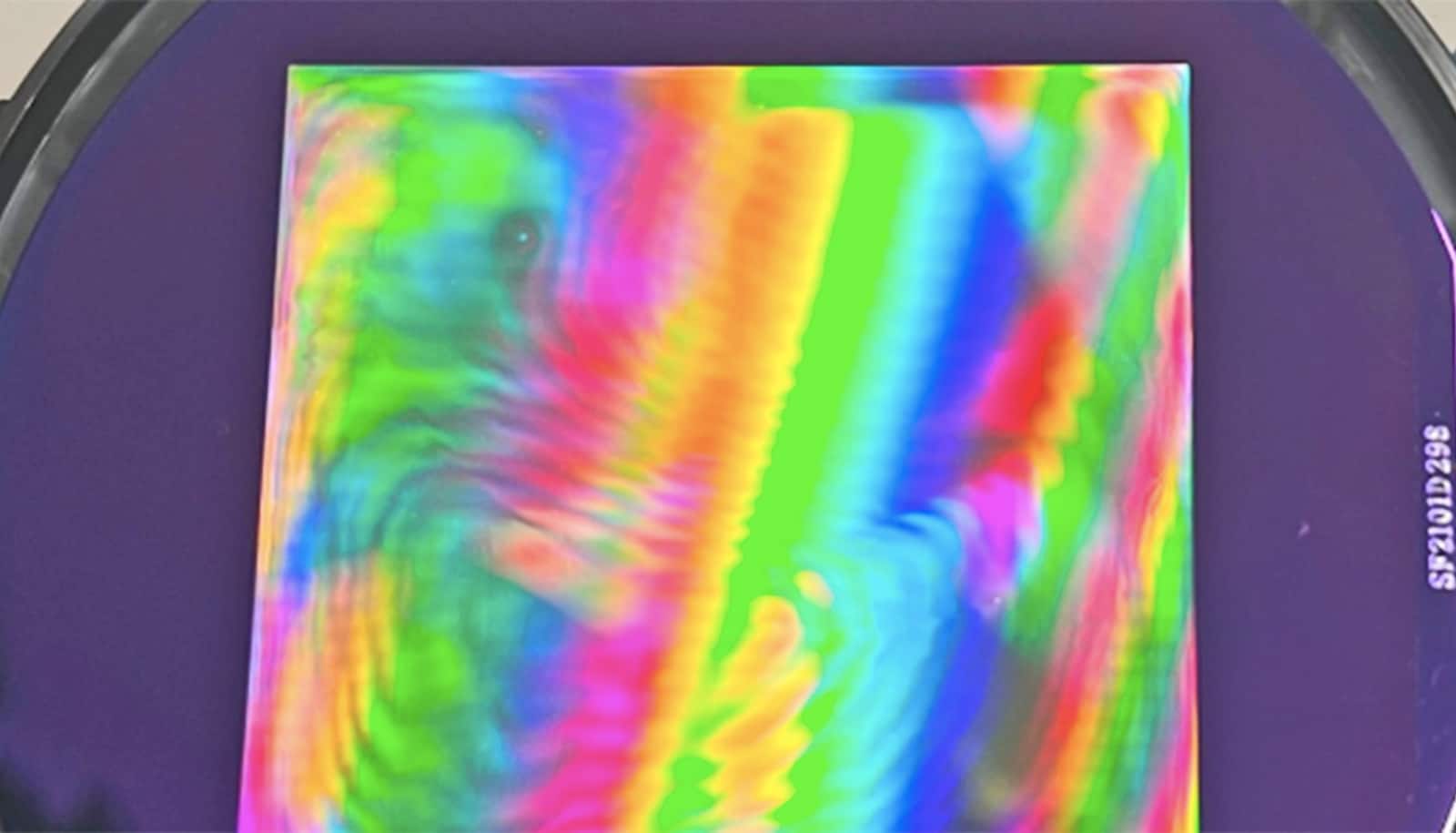Oobleck, named for a gooey substance that fell from the sky in a Dr. Seuss story and ubiquitous at elementary school science fairs, is just a thick solution of cornstarch in water. But it’s not as simple as it sounds.
It’s a “non-Newtonian” fluid that doesn’t respond to outside forces the way you’d expect. The harder you stir it, the thicker it gets and the more it resists your stirring. Hit it hard enough, say with a hammer, and it instantly hardens enough to shatter.
YouTube is filled with videos of people running across pools filled with the goo. The pressure of a foot striking the surface causes the liquid to thicken under it enough to support the runner.
Now physicists are able to explain how it works.
The phenomenon that lets oobleck do what it does is called “shear thickening,” a process that occurs in materials made up of microscopic solid particles suspended in a fluid. Examples include drilling mud used in oil wells and fluid used to couple automobile transmissions to the wheels.
One type of body armor uses a solution of polymer particles soaked into porous fiber; ordinarily flexible, but the impact of a bullet turns it solid. Shear thickening is a challenge in many industrial processes where the goal is to get fluids to flow smoothly.
Decades of debate
Even in the simplest system of particles suspended in a liquid, however, there is still a debate about the mechanism for thickening. One proposed theory is that friction between the solid particles locks them into configurations that resist the flow; the other is that as particles are pushed closer, resistance from draining the liquid between them slows down their movement and locks the particles into clusters.
[Is the secret to Roman concrete in volcanic rock?]
The debate has continued for decades because there is no way to observe directly what’s happening at the nanoscale.
So Itai Cohen, associate professor of physics at Cornell University, came up with an experiment in which behavior in the everyday world reveals what’s happening deep down inside. The findings are published in Physical Review Letters.
What’s really happening
If fluid being pushed out from between the particles is what’s slowing down movement, researchers reasoned, then when the shearing force is reversed, it will generate the same resistance since the fluid needs to flow back in.
If it’s just solid particles bumping into each other, then as soon as the shearing force is released the contact stress between them will disappear. The immediate response to a sudden change in shear force will answer the question.
[WATCH: Teeming ants act like both a solid and a liquid]
To observe that effect they employed “shearing reversal,” using an apparatus that inserts a probe into a test fluid and shears it just long enough to cause thickening, and then quickly reverses to pull in the opposite direction.
Delicate sensors on the shaft measure the fluid’s instantaneous resistance to being pushed or pulled. They used a “laboratory grade” suspension of spherical microparticles to isolate the effects of particle interactions.
The experiment showed that there was negligible resistance pulling back. This means that while the liquid does flow out as particles come together and back as they separate, the resulting force does not account for the actual thickening resistance. The contact force dominates, so friction between particles is the primary mechanism for shear thickening.
“Knowing the underlying mechanism, we can design industrial processes to handle these fluids better and can ‘tune’ the properties of a fluid by adjusting the friction of the microparticles,” says graduate student Neil Lin, first author of the paper. Another way to tune the effect is by varying the concentration of the nanoparticles, so “Now we have two knobs to turn.”
Researchers from the University of Edinburgh are coauthors of the study. The National Science Foundation supported the work.
Source: Cornell University


